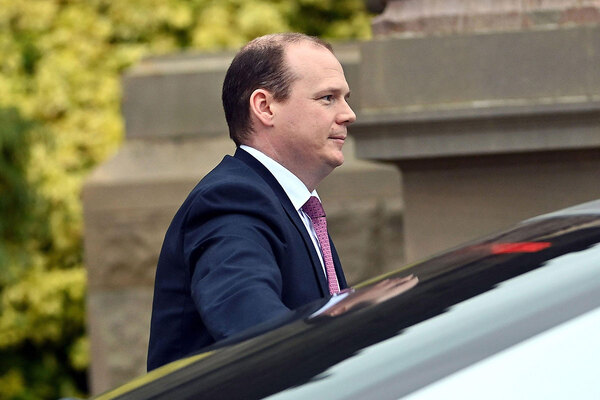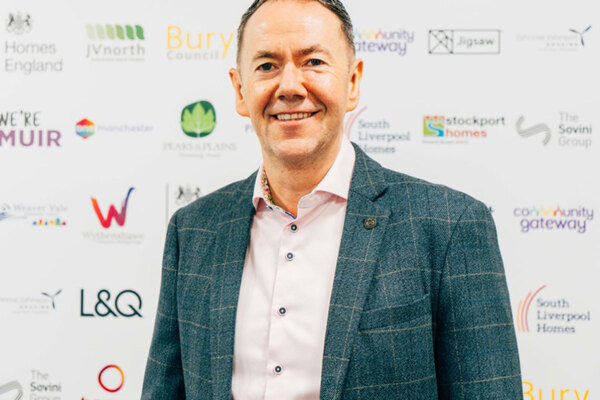Guinness merger boosts borrowing
A restructure at Guinness Partnership will allow the landlord to build 700 more homes. Carl Brown finds out how

‘Just by bringing our assets and loans together, without making any other changes, we would be able to deliver 700 more homes.’
Guinness Partnership chief executive Simon Dow’s claims about the impact of his organisation’s recent restructure are impressive. In July, the 60,000-home landlord completed its merger of four organisations following two years of extensive negotiations with lenders.
Guinness Hermitage, Guinness Northern Counties, Guinness South and Guinness Trustees now form one legal entity, called Guinness Partnership, which registered with the Homes and Communities Agency as a social housing provider in July.
According to Mr Dow, the move will create tens of millions of pounds of extra borrowing capacity for the organisation. This is because lending agreements for individual subsidiaries previously restricted the amount of existing debt facilities that could be used.
Mr Dow says the merger will enable Guinness Partnership to fund the building of 2,378 new homes under the affordable homes programme without having to raise extra money on the capital markets.
We otherwise would have probably had to go to the market in 2013 for between £50 million and £100 million,’ he explains.
‘In reality this would probably have been more like £250 million to make a bond issue worthwhile.’
Mr Dow estimates the change in structure alone, before efficiency savings, will boost the organisation’s overall development programme by 700 homes. He says Guinness Partnership will spend more than £400 million on 3,000 new homes by 2015.
The company currently has £1.3 billlion of lending facilities, of which £233 million is undrawn. The organisation’s gearing ratio, which measures debt to assets, is 60 per cent.
‘Lenders’ gearing covenants are covered by confidentiality arrangements but they provide us with signficiant headroom,’ Mr Dow says.
The merger required the consent of lenders, and Guinness offered an undisclosed amount in fees in return for permission to restructure.
Unlike the mergers of other providers, the Guinness restructure will retain the boards of its subsidiaries. These boards will continue to run the subsidiaries, even though they will no longer exist as legal entities. Mr Dow says this is because Guinness Partnership has stock across the country, and boards are needed to address local concerns and issues.
‘You cannot run a national organisation from a central location. You will get things wrong.’
The move to a single company completes a process which began in 2007, when Guinness Partnership, previously Guinness Trust Group, was formed. At that point the organisation comprised 13 housing associations, which have been gradually reduced.
Mr Dow believes the move to integrate the subsidiaries and simplify the group’s legal structure has led to £12 million of savings a year, as duplication was reduced. Around 70 posts have been axed.
Guinness Partnership also has Guinness Care and Support and a for-profit subsidiary, Guinness Developments. Both are separate legal entities to Guinness Partnership.
Guinness Partnership anticipates Guinness Developments will spend £45 million and generate up to £10 million of revenue a year over the next three years to cross-subsidise the core business.
The company also has a non-charitable arm, Guinness Housing Association, which is being retained in case rules change on what counts as a charitable activity.
Guinness Partnership plans to raise £60 million over the next three years with a stock rationalisation programme. The group intends to sell around 2,000 properties by 2015.
Joseph Carr, finance policy leader at the National Housing Federation, says he has not heard of associations using mergers to boost borrowing headroom of existing debt in this way.
He says: ‘You can see the sense of what they are doing. It seems like a microcosm of what is happening in the sector. Organisations are sitting on pots of capacity and if they bring them together they can be more effective.’
In numbers
£3 billion
value of assets
£280 million
turnover
£24 million
surplus
£1.3 billion
loan facilities
£52.1 million
Homes and Communities Agency grant allocation








